“Those who make desserts possess a different temperament, are set apart. The pastry chef, the maker of desserts, is regularly referred to as an “artist.” The patissier must create like the painter, sculptor or even the musician; requirements that are rarely expected of those who deal in savory.”
– from Sweet Everything, by Edward Bottone
This last week’s class at pastry school was masa quebrada – tart doughs. “Masa” of course being a “dough”, but I was curious as to the “quebrada” – there were a couple of possibilities – a quebrada being a gorge or stream, not likely, possibly from the literary “broken”, “rough”, “rugged”? But the most likely, and probably obvious for a Spanish speaker, given that it’s being used as an adjective to modify dough, is the adjectival form of the verb quebrar, “to break” – and I assume it’s a reference to the brittleness and that crisp snap of break-ability of a properly made, crispy thin tart dough. And I’m sticking with that. Let’s move on to the tart porn….
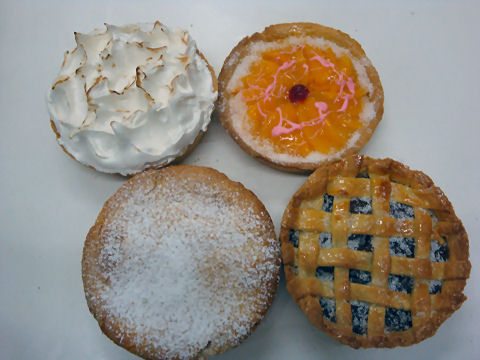
Four of Tarts
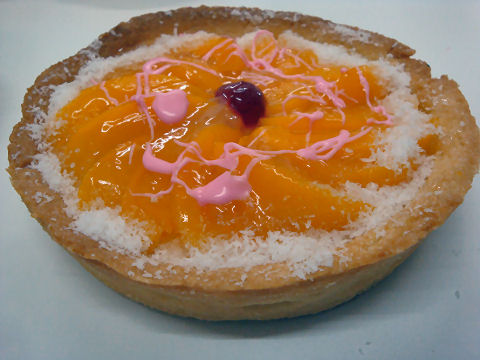
Peach Tart with Pastry Cream
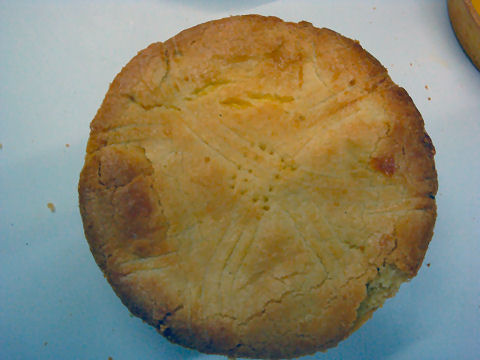
Tarta de Ricota
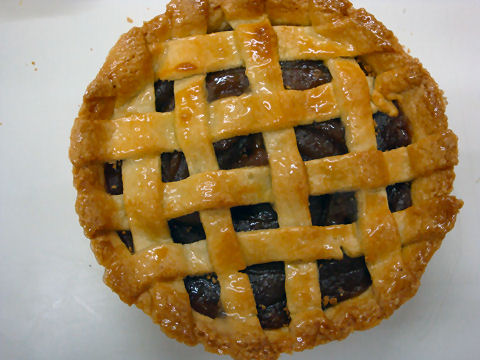
Pasta Frola – quince paste tart
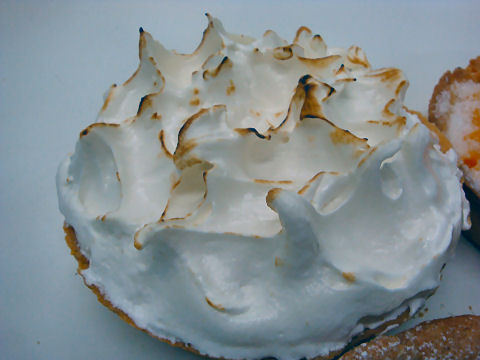
Límon Pie
Now, keeping in mind that these are all about 8″ across tarts and as I noted last week, we have to bring these home after class, this was a bit overwhelming in the house – I may just start handing out desserts to folk on the street after class. I have to admit to having consumed, over the week, most of the pasta frola, it goes great with coffee in the morning. Henry invited friends over to consume the rest.
What was particularly good about this class is that it took a basic tart dough recipe, something I’ve “known” how to make for years, and he showed us how to do it right. The ingredients didn’t change from anything I’ve done in the past, perhaps slightly different in proportions, but his method of mixing it all together and forming it was either completely different from anything I learned back in cooking school (our pastry and baking section was a short week out the entire program, it wasn’t our focus), or, more likely, I’ve simply forgotten over time what was demonstrated to us. And he makes it look so easy, and then it turns out, it is, and, I have to admit, I was quite proud of the way these turned out.
Tart dough? I always used to (Hell I still do!) make them with a sweet shortcrust pastry base. Is this an actual risen dough, or just a confusion in terminology?
It’s quite similar – there are just several types. And I’m just using “tart dough” as a generic, just as “shortcrust pastry base” is – neither is really the technical term for the type of dough, it’s just what you or I grew up calling it.
It’s easy: “masa quebrada” is Spanish for “pate brissee”.
Regards
As a direct translation, yes, that’s true. However, masa quebrada is also used, at least according to both our professor, and several cookbooks I have here, for pate sucree and other shortcrust pastries. The point, however, was to translate it into English, where it wouldn’t be called “broken dough”, despite that being what it means – we tend to refer to it as either “tart dough” or “pastry dough/crust” or “shortcrust pastry dough”.
I love my tarts slightly burnt for a kick of crisp!